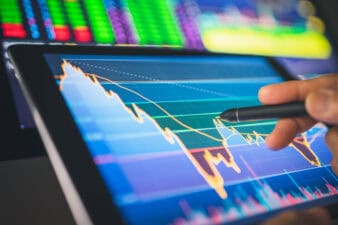Last week, the Federal Government announced that it had increased the EI and CRB to $500 per week. These benefits were announced over the summer as replacements to the CRA’s CERB. When they were first announced, these programs paid a minimum of $400 per week. Now, the floor is $100 a week higher. Thus, the revamped EI and CRB now match the CERB. In fact, as a result of the new enhancements, EI could actually be better than the CERB. Here’s why.
EI can pay more than the CERB
When it was available, the CERB paid Canadians $500 a week, or $1,000 per bi-weekly pay period. The amount was set in stone by the CRA: nobody got more or less than the stated amount.
With the expanded EI, it’s a little different. If your hours worked qualify you for more than $500 a week, you can easily get more than that. According to Canada.ca, the ceiling for EI is $573 a week. With the $500 a week floor, you could get anywhere between $500 and $573. So there’s potential to get more than the CERB paid.
The CRB now matches the CERB
As we saw above, the new, expanded EI pays at least as much as the CERB, and could pay more. The CRB, on the other hand, pays exactly the same amount. With the CRB, you get $500 a week, with no potential for higher amounts if you worked more hours. This means the maximum benefit is lower than EI, but its eligibility criteria are more lenient.
You don’t need to have ever paid EI premiums to get the CRB. Even if you’re self-employed, you can get it. In fact, it was specifically created with self-employed people in mind. So, if you can’t get the expanded EI, the CRB may have you covered.
What this means for your money
With the new and expanded EI and CRB, unemployed Canadians can still bring home several thousand dollars a month, which can make a big difference over the long term.
To show what a big difference it could make, let’s imagine that you received $500 a week in CRB money. We’ll ignore the taxes for simplicity’s sake. At the end of 20 weeks, you’d have received $10,000 in benefits. With the benefit being available for 26 weeks, that’s entirely within the realm of possibility.
If you saved all that money, you’d have $10,000 in the bank. That’s not an insignificant sum of money, and it could grow to be even larger. If you invested $10,000 in the BMO Covered Call Utilities ETF (TSX:ZWU), you’d get hundreds of dollars back a year in dividends. BMO’s website says the fund has a 7.8% yield, but the fund has a 0.8% fee, so let’s just say 7%.
Over the course of 10 years, $700 in annual dividends would add up to $7,000. That’s just from investing $10,000 up-front! And that’s not including capital gains or potential dividend increases. All you’d need to realize that return is a sum of money you could easily get from the CRB or EI. So even in the age of COVID-19, you can still grow your wealth by investing.







